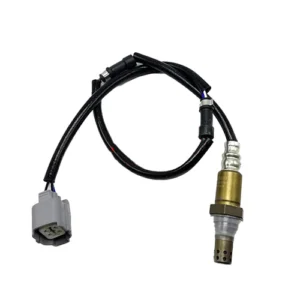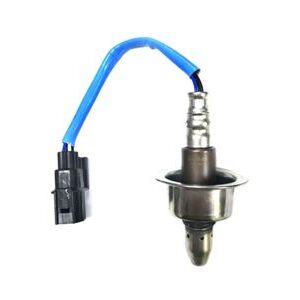**The Unseen Guardian: Battery Current Sensor**
In the world of automotive engineering, where cutting-edge technology and meticulous design converge, certain components often go unnoticed, yet they play a pivotal role in the smooth functioning of vehicles. One such unsung hero is the battery current sensor. Despite its unassuming appearance, this device holds significant importance in the realm of electric vehicles (EVs) and hybrid electric vehicles (HEVs). Let’s embark on a journey to unravel the mysteries and marvels of the battery current sensor.
**Understanding the Essence: What is a Battery Current Sensor?**
Nestled within the electrical system of electric and hybrid vehicles, the battery current sensor serves as a vigilant guardian, constantly monitoring the flow of electrical current to and from the battery pack. Its primary function is to measure the amount of current passing through the battery terminals, providing crucial data to the vehicle’s onboard systems for optimal performance and safety.
**The Significance of Current Monitoring**
In the realm of electric and hybrid vehicles, where the battery serves as the lifeblood of the propulsion system, maintaining precise control over the flow of current is paramount. The battery current sensor plays a crucial role in this endeavor by providing real-time feedback on current levels, enabling the vehicle’s control systems to make informed decisions regarding power delivery, charging, and energy management.
**The Silent Observer: How Does a Battery Current Sensor Work?**
Despite its modest size and unassuming appearance, the battery current sensor employs sophisticated technology to fulfill its role. Typically utilizing Hall effect or shunt resistor principles, the sensor detects the magnetic field generated by the flow of current through a conductor or measures the voltage drop across a calibrated resistor.
As electrical current passes through the sensor, it induces a magnetic field or produces a voltage drop proportional to the current magnitude. This signal is then processed and transmitted to the vehicle’s electronic control unit (ECU), which uses the data to regulate power distribution, manage battery charging, and ensure the safety and efficiency of the electrical system.
**The Unseen Benefits: Advantages of Battery Current Sensors**
While the primary role of battery current sensors is to monitor and manage electrical current flow, their benefits extend beyond mere current measurement:
1. **Enhanced Safety:** By providing real-time feedback on current levels, battery current sensors contribute to the safe operation of electric and hybrid vehicles, helping to prevent overloading, short circuits, and other electrical faults that could pose a safety hazard.
2. **Optimized Performance:** Precise control over current flow enables the vehicle’s control systems to optimize power delivery, improve efficiency, and extend battery life, ensuring optimal performance under various driving conditions.
3. **Accurate State-of-Charge Estimation:** Battery current sensors play a crucial role in accurately estimating the state of charge (SOC) of the battery pack, enabling drivers to monitor remaining range and plan their journeys accordingly.
4. **Diagnostic Capabilities:** Battery current sensors also facilitate onboard diagnostics by detecting abnormalities in current flow, aiding in the early detection and diagnosis of potential electrical system faults.
**Looking Ahead: The Evolution of Current Sensing Technology**
As electric and hybrid vehicles continue to gain traction in the automotive market, the role of battery current sensors is poised to become even more critical. Future innovations may include the development of more advanced sensor technologies, such as optical or wireless current sensing, to enhance accuracy, reliability, and efficiency.
Furthermore, as battery technology advances and vehicle electrification becomes more widespread, battery current sensors will play a vital role in enabling fast charging, vehicle-to-grid (V2G) communication, and other emerging applications aimed at maximizing the benefits of electrified transportation.
**In Conclusion: The Unsung Guardian**
In the dynamic world of electric and hybrid vehicles, where innovation and sustainability intersect, the battery current sensor stands as a silent guardian, tirelessly monitoring the flow of electrical current to ensure the safe and efficient operation of the vehicle. Its unassuming presence belies its critical importance in shaping the future of transportation.
So, the next time you plug in your electric vehicle or glide silently down the road in a hybrid, take a moment to appreciate the unsung hero working quietly behind the scenes—the humble battery current sensor.
In stock (can be backordered)
$37,904.62
**The Unseen Guardian: Battery Current Sensor**
In the world of automotive engineering, where cutting-edge technology and meticulous design converge, certain components often go unnoticed, yet they play a pivotal role in the smooth functioning of vehicles. One such unsung hero is the battery current sensor. Despite its unassuming appearance, this device holds significant importance in the realm of electric vehicles (EVs) and hybrid electric vehicles (HEVs). Let’s embark on a journey to unravel the mysteries and marvels of the battery current sensor.
**Understanding the Essence: What is a Battery Current Sensor?**
Nestled within the electrical system of electric and hybrid vehicles, the battery current sensor serves as a vigilant guardian, constantly monitoring the flow of electrical current to and from the battery pack. Its primary function is to measure the amount of current passing through the battery terminals, providing crucial data to the vehicle’s onboard systems for optimal performance and safety.
**The Significance of Current Monitoring**
In the realm of electric and hybrid vehicles, where the battery serves as the lifeblood of the propulsion system, maintaining precise control over the flow of current is paramount. The battery current sensor plays a crucial role in this endeavor by providing real-time feedback on current levels, enabling the vehicle’s control systems to make informed decisions regarding power delivery, charging, and energy management.
**The Silent Observer: How Does a Battery Current Sensor Work?**
Despite its modest size and unassuming appearance, the battery current sensor employs sophisticated technology to fulfill its role. Typically utilizing Hall effect or shunt resistor principles, the sensor detects the magnetic field generated by the flow of current through a conductor or measures the voltage drop across a calibrated resistor.
As electrical current passes through the sensor, it induces a magnetic field or produces a voltage drop proportional to the current magnitude. This signal is then processed and transmitted to the vehicle’s electronic control unit (ECU), which uses the data to regulate power distribution, manage battery charging, and ensure the safety and efficiency of the electrical system.
**The Unseen Benefits: Advantages of Battery Current Sensors**
While the primary role of battery current sensors is to monitor and manage electrical current flow, their benefits extend beyond mere current measurement:
1. **Enhanced Safety:** By providing real-time feedback on current levels, battery current sensors contribute to the safe operation of electric and hybrid vehicles, helping to prevent overloading, short circuits, and other electrical faults that could pose a safety hazard.
2. **Optimized Performance:** Precise control over current flow enables the vehicle’s control systems to optimize power delivery, improve efficiency, and extend battery life, ensuring optimal performance under various driving conditions.
3. **Accurate State-of-Charge Estimation:** Battery current sensors play a crucial role in accurately estimating the state of charge (SOC) of the battery pack, enabling drivers to monitor remaining range and plan their journeys accordingly.
4. **Diagnostic Capabilities:** Battery current sensors also facilitate onboard diagnostics by detecting abnormalities in current flow, aiding in the early detection and diagnosis of potential electrical system faults.
**Looking Ahead: The Evolution of Current Sensing Technology**
As electric and hybrid vehicles continue to gain traction in the automotive market, the role of battery current sensors is poised to become even more critical. Future innovations may include the development of more advanced sensor technologies, such as optical or wireless current sensing, to enhance accuracy, reliability, and efficiency.
Furthermore, as battery technology advances and vehicle electrification becomes more widespread, battery current sensors will play a vital role in enabling fast charging, vehicle-to-grid (V2G) communication, and other emerging applications aimed at maximizing the benefits of electrified transportation.
**In Conclusion: The Unsung Guardian**
In the dynamic world of electric and hybrid vehicles, where innovation and sustainability intersect, the battery current sensor stands as a silent guardian, tirelessly monitoring the flow of electrical current to ensure the safe and efficient operation of the vehicle. Its unassuming presence belies its critical importance in shaping the future of transportation.
So, the next time you plug in your electric vehicle or glide silently down the road in a hybrid, take a moment to appreciate the unsung hero working quietly behind the scenes—the humble battery current sensor.
| Weight | 0.02 kg |
|---|---|
| Warehouse | Inventory at warehouse 2 |


Get E-mail updates about our latest products and special offers.
Sensors and More is Jamaica’s ultimate online auto parts store. Established in 2020, we specialize in genuine electrical parts for Japanese, Read more…
Reviews
There are no reviews yet.